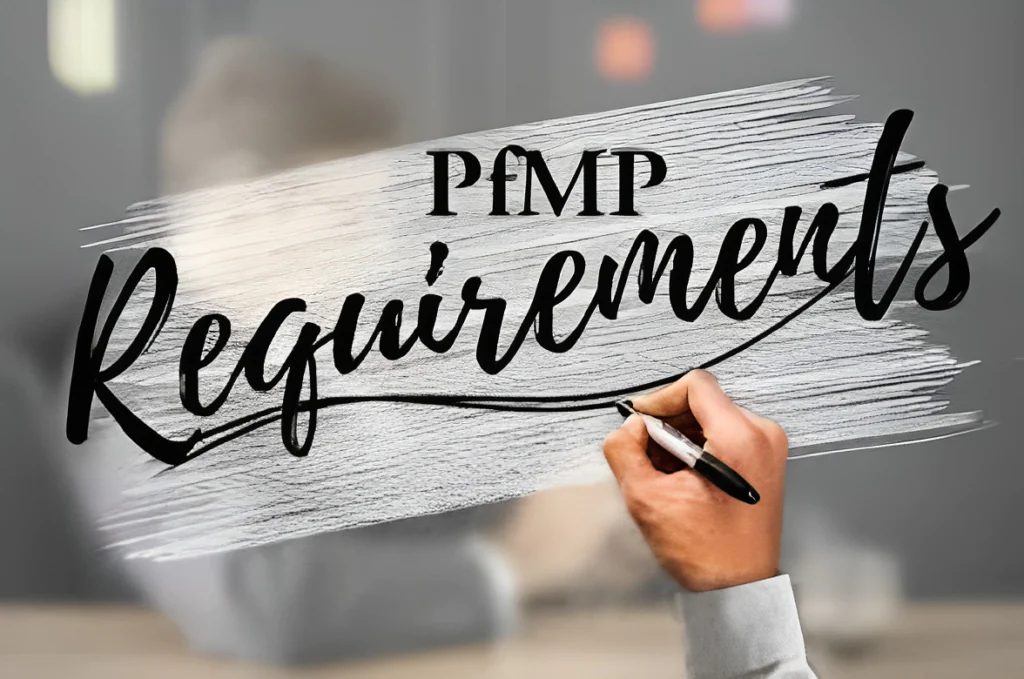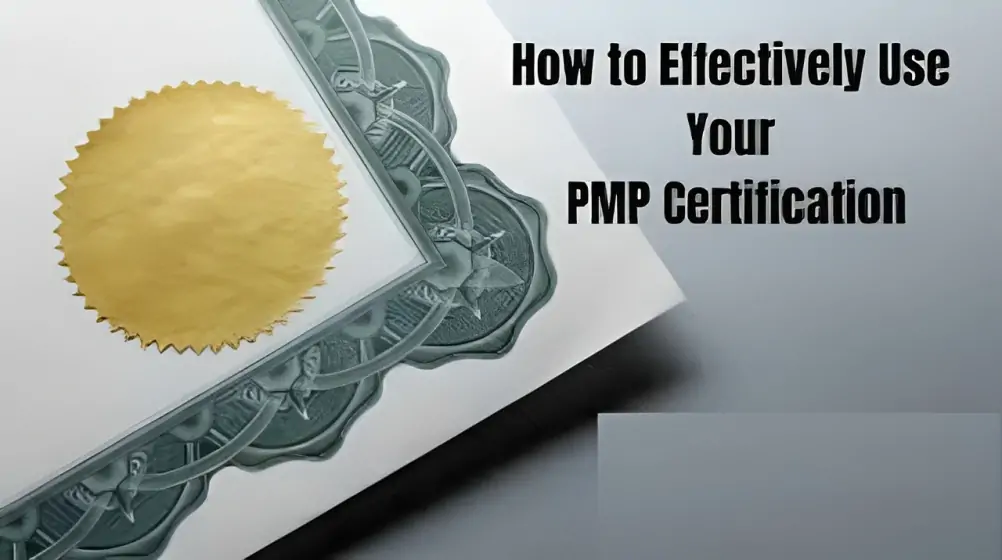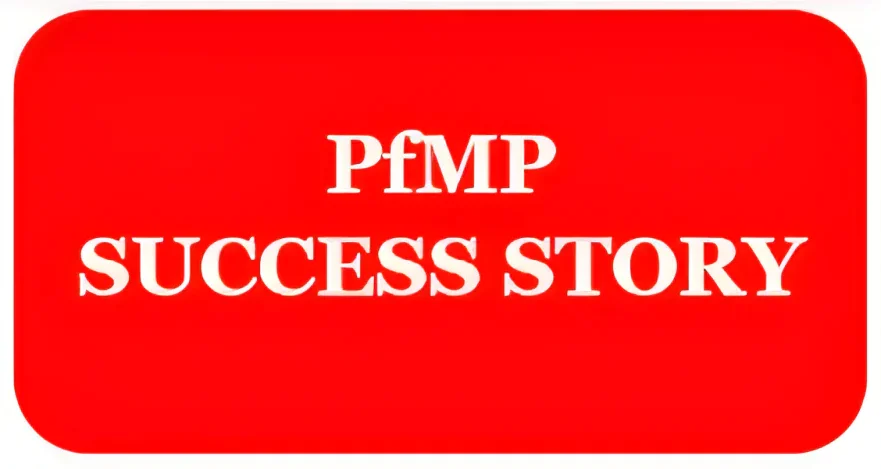Master the art of strategic portfolio management with the coveted Portfolio Management Professional, PfMP Certification. Dive into its eligibility, exam preparation, and the doors it opens for your career.

Introduction:
In today’s fast-paced and ever-evolving business world, effective portfolio management is crucial for organizations to thrive and stay competitive. The role of a Portfolio Manager is becoming increasingly significant, and organizations are actively seeking professionals who can navigate the complex landscape of portfolio management with finesse. If you’re looking to boost your career in project and portfolio management, the Portfolio Management Professional, PfMP certification is the ideal stepping stone. In this comprehensive guide, we’ll explore everything you need to know about the PfMP certification, including why it’s essential, how to obtain it, and the best training options available.
Why Portfolio Management Matters:
Portfolio management is a strategic approach to managing an organization’s projects, programs, and initiatives. It involves making decisions that align with an organization’s objectives and ensure the efficient allocation of resources. Here are some key reasons why portfolio management is crucial:Resource Optimization: Portfolio management helps organizations allocate their resources (people, budget, and time) effectively, ensuring that projects and programs with the highest strategic value receive the necessary support.
Risk Mitigation: By evaluating the risks associated with each project or program in the portfolio, portfolio managers can proactively identify and mitigate potential issues, reducing the likelihood of project failures.
Strategic Alignment: Portfolio management ensures that all projects and programs align with the organization’s strategic goals and objectives, enhancing the overall success of the organization.
Improved Decision-Making: It provides a structured framework for making informed decisions about which projects to initiate, continue, or terminate based on their contribution to the organization’s objectives.
Financial Accountability: Effective portfolio management helps organizations manage their budgets and investments efficiently, maximizing returns and minimizing wastage.
The Portfolio Management Professional, PfMP certification is a globally recognized credential awarded by the Project Management Institute (PMI). PMI, a renowned institution in the field of project management, offers various certifications, and the PfMP is tailored specifically for professionals involved in portfolio management.

Key Benefits of Portfolio Management Professional, PfMP Certification:
Obtaining the PfMP certification offers several benefits, making it a valuable investment in your career:
Recognition: PfMP certification demonstrates your expertise in portfolio management, making you a recognized authority in your field.
Career Advancement: With the PfMP certification, you’ll stand out among your peers and have a competitive edge when pursuing senior-level positions in portfolio management.
Increased Earning Potential: Certified professionals typically earn higher salaries than their non-certified counterparts.
Global Opportunities: The PfMP is recognized worldwide, opening doors to job opportunities and collaborations on a global scale.
Enhanced Skills: The certification process equips you with in-depth knowledge and skills in portfolio management, enabling you to excel in your role.
Eligibility Criteria for Portfolio Management Professional, PfMP Certification:
Before you embark on your journey to PfMP certification, it’s important to ensure you meet the eligibility criteria set by PMI:
Educational Background: A secondary degree (high school diploma, associate’s degree, or equivalent) is required. Additionally, you need to have completed at least four years of professional work experience in portfolio management within the last 15 years.
Portfolio Experience: To qualify, you should have experience in all five domains of portfolio management: Strategic Alignment, Governance, Performance Management, Portfolio Risk Management, and Communications Management.
Education: PMI also requires 8,750 hours of professional portfolio management education. This can be fulfilled through courses or training related to portfolio management.
Examination: Successfully pass the PFMP examination, which assesses your knowledge and skills in portfolio management.
2. Study the PMI PfMP Handbook
PMI offers a PfMP Handbook that contains essential information about the certification process, eligibility criteria, and examination details. Read this handbook thoroughly to gain a clear understanding of what to expect.
3. Take a PfMP Training Course
Enrolling in a PfMP training course is one of the most effective ways to prepare for the examination. These courses are designed to cover all the relevant material, provide practice questions, and offer guidance from experienced instructors.
4. Self-Study
If you prefer a more self-paced approach, consider studying independently. Utilize resources such as textbooks, online courses, and practice exams to reinforce your knowledge.
5. Create a Study Plan
Develop a study plan that outlines your study schedule, topics to cover each day, and milestones to track your progress. Consistency and discipline are key to successful exam preparation.
6. Practice, Practice and Practice
Practice exams are invaluable for assessing your readiness. PMI offers practice questions on their website, and there are many third-party resources available as well. Take full-length practice exams to simulate the test-taking experience.
7. Join Study Groups
Connecting with fellow PfMP aspirants through study groups can provide a supportive environment for learning and sharing insights. You can discuss challenging topics, share resources, and gain different perspectives.
8. Review and Revise
In the weeks leading up to the exam, allocate time for review and revision. Focus on areas where you feel less confident and revisit your study materials.
Best Training Options for PfMP Certification:
Choosing the right training provider is crucial for your PfMP certification journey. Here are some top options to consider:
1. PMI Global Registered Education Providers (R.E.P.s)
PMI has a network of Registered Education Providers that offer PfMP training courses. These providers are approved by PMI and offer high-quality training programs that align with PMI’s standards.
2. Online Courses and E-Learning Platforms
There are several online platforms that offer PfMP training courses. These platforms provide flexibility in terms of when and where you can study. Look for courses that are endorsed by PMI or taught by experienced PfMP instructors.
3. In-Person Workshops and Seminars
If you prefer face-to-face learning, consider attending in-person PfMP workshops and seminars. These events often provide intensive training and the opportunity to interact with instructors and peers.
4. Self-Study Resources
For self-directed learners, there are numerous books, study guides, and practice exam books available for PfMP preparation. These resources can be a cost-effective option, but they require a high degree of self-discipline.
Tips for Selecting the Right PfMP Training Provider:
Choosing the best training provider for your PfMP certification is a critical decision. Here are some tips to help you make an informed choice:
1. Verify PMI Endorsement
Ensure that the training provider is endorsed or recognized by PMI. This ensures that the course content aligns with PMI’s standards and guidelines.

2. Instructor Credentials
Check the credentials and experience of the instructors. Experienced instructors with a strong background in portfolio management are more likely to provide valuable insights and guidance.
3. Course Content
Review the course curriculum and materials. Ensure that they cover all the relevant PfMP domains and knowledge areas comprehensively.
4. Reviews and Testimonials
Look for reviews and testimonials from previous participants of the training program. Positive feedback from satisfied students is a good indicator of the program’s quality.
5. Flexibility
Consider your own schedule and learning preferences. Choose a training option that fits your needs, whether it’s an in-person workshop, an online course, or self-paced study.
6. Cost
Compare the cost of different training options and consider your budget. Keep in mind that investing in high-quality training is an investment in your career.
The PMI PfMP Examination: What to Expect:
Once you’ve completed your training and feel adequately prepared, it’s time to register for the PfMP examination. Here’s what you can expect on exam day:
1. Computer-Based Testing
The PfMP exam is computer-based, which means you’ll take it at a designated testing center. PMI has a global network of Prometric testing centers where you can schedule your exam.
2. Exam Format
The PfMP exam consists of 170 multiple-choice questions, and you’ll have four hours to complete it. The questions are divided into the five PfMP domains: Strategic Alignment, Governance, Performance Management, Portfolio Risk Management, and Communications Management.
3. Scoring
The passing score for the PfMP exam is not disclosed by PMI. However, PMI uses a psychometric analysis to determine the passing score based on the difficulty of the questions.
4. Results
You’ll receive your exam results immediately after completing the test. If you pass, you’ll receive a certificate acknowledging your PfMP certification. If you don’t pass, you’ll receive a detailed report indicating your performance in each domain, which can be helpful for targeted study if you decide to retake the exam.
Maintaining Your PMI PfMP Certification:
Achieving the PfMP certification is a significant accomplishment, but it’s important to note that it’s not a one-time achievement. To maintain your certification, you must adhere to PMI’s Continuing Certification Requirements (CCR) program. Here’s how it works:

1. Continuing Education
You must earn 60 Professional Development Units (PDUs) every three years to demonstrate your commitment to ongoing learning and professional development. These PDUs can be earned through various activities, including attending courses, conferences, webinars, and self-study.
2. Renewal Fee
In addition to earning PDUs, you’ll need to pay a renewal fee to maintain your PfMP certification. PMI provides a renewal portal on its website where you can submit your PDUs and pay the renewal fee.
3. Compliance Audit
PMI conducts random audits to ensure that certified professionals are meeting the CCR requirements. If you’re selected for an audit, you’ll need to provide documentation to verify your PDUs.
PfMP Success Story:
Success stories are powerful motivators that inspire individuals to pursue their goals with determination and dedication. In the realm of project and portfolio management, achieving the Portfolio Management Professional, PfMP certification is a remarkable accomplishment that requires unwavering commitment and a deep understanding of portfolio management principles. In this success story, we’ll delve into the journey of John, a passionate professional who transformed his career and life by obtaining the PfMP certification.

Meet John: The Aspiring Portfolio Manager
John had always been fascinated by the intricate world of project and portfolio management. With a background in business administration and several years of experience in project management, he recognized the importance of portfolio management in driving organizational success. John aspired to become a Portfolio Manager and guide organizations toward strategic excellence.
John’s journey toward PfMP certification began with a desire to gain a deeper understanding of portfolio management and solidify his position as an expert in the field. He understood that the PfMP certification would not only enhance his knowledge but also open doors to exciting career opportunities.
The PfMP Preparation Journey
John embarked on his PfMP certification journey with clear goals and a determination to succeed. Here’s how he prepared for the challenging certification:
1. Research and Planning
John started by researching the PfMP certification process, eligibility criteria, and the domains covered in the exam. He carefully reviewed the PfMP Handbook provided by the Project Management Institute (PMI) to understand the certification requirements.
2. Eligibility Assessment
To ensure he met the eligibility criteria, John evaluated his educational background, work experience, and portfolio management education hours. He recognized the importance of having hands-on experience in portfolio management across all five domains: Strategic Alignment, Governance, Performance Management, Portfolio Risk Management, and Communications Management.
3. Selecting the Right Training
John realized the value of professional training and opted for a PfMP training course from a reputable PMI Global Registered Education Provider (R.E.P.). The course covered all the necessary content and provided valuable insights from experienced instructors.
4. Study and Practice
John devoted significant time to studying the course materials and practicing with sample questions. He created a study schedule that allowed him to cover all the domains thoroughly, ensuring he was well-prepared for the exam.
5. Networking and Support
John joined a PfMP study group to connect with like-minded individuals who were also pursuing the certification. The study group provided a supportive environment for discussing complex topics and sharing study resources.
6. Mock Exams
To gauge his readiness for the PfMP exam, John took multiple mock exams. These practice tests helped him become familiar with the exam format and assess his strengths and weaknesses.
7. Review and Revision
In the weeks leading up to the exam, John focused on reviewing challenging areas and reinforcing his understanding of key concepts. He maintained a disciplined study routine to ensure no topic was left unexplored.
The PfMP Examination
On the day of the PfMP exam, John arrived at the Prometric testing center with a sense of confidence and readiness. The computer-based exam consisted of 170 multiple-choice questions, covering the five domains of portfolio management. With a deep understanding of portfolio management principles and extensive preparation, John successfully completed the exam within the allotted time.
Celebrating Success: Becoming a PfMP Certified Professional
John’s dedication and commitment paid off when he received his exam results immediately after completing the test. The screen displayed the coveted message: “Congratulations! You have passed the PfMP examination.” John’s heart swelled with pride as he knew that this achievement marked a significant milestone in his career.
With his PfMP certification in hand, John had not only fulfilled his personal and professional aspirations but also positioned himself as a recognized expert in portfolio management. His success story didn’t end with the certification; it was just the beginning of a new chapter in his career.
The Impact of PfMP Certification
John’s PfMP certification opened doors to exciting opportunities in the field of portfolio management. Here are some of the profound impacts of his certification:
1. Career Advancement
With the PfMP certification, John’s resume stood out among his peers. He quickly secured a prestigious position as a Portfolio Manager with a leading financial institution, overseeing a diverse portfolio of projects and programs.
2. Increased Earning Potential
Certified professionals often command higher salaries, and John was no exception. His PfMP certification led to a significant salary increase, reflecting his expertise and value to his organization.
3. Enhanced Skills and Knowledge
The process of preparing for the PfMP exam deepened John’s understanding of portfolio management. He applied this knowledge to real-world scenarios, leading to better decision-making and strategic alignment within his organization.
4. Networking Opportunities
John’s involvement in PfMP study groups and professional networks expanded his circle of contacts in the industry. He regularly attended PMI events and conferences, where he shared insights and gained fresh perspectives from fellow professionals.
Maintaining PfMP Certification
John understood that maintaining his PfMP certification was essential to continue reaping its benefits. He committed to PMI’s Continuing Certification Requirements (CCR) program, earning Professional Development Units (PDUs) through ongoing learning and engagement in portfolio management-related activities. John also paid the renewal fee promptly to keep his certification active.
John’s Journey of Success
John’s PfMP success story serves as a testament to the power of determination, preparation, and commitment. His journey from an aspiring Portfolio Manager to a PfMP-certified professional showcases the immense value of the certification in advancing one’s career and expertise in portfolio management.
Aspiring portfolio management professionals like John can draw inspiration from his story, realizing that with the right resources, training, and dedication, they too can achieve their PfMP certification and unlock a world of opportunities.
If you’re considering pursuing the PfMP certification, take a page from John’s playbook. Invest in professional training, create a study plan, practice rigorously, and connect with a supportive network of fellow aspirants. With determination and the right resources, you can write your own success story in the world of portfolio management.
At BlueMorpho Learning Solutions, we’re committed to helping professionals like you achieve their career aspirations through high-quality PfMP training programs. Join us on your journey to becoming a PfMP-certified professional and make your success story a reality.
Conclusion:
- The Portfolio Management Professional, PfMP certification is a testament to your expertise in portfolio management and a valuable asset in your career. It opens doors to new opportunities, enhances your skills, and sets you apart as a trusted professional in the field.
- To embark on your journey to PfMP certification, start by ensuring you meet the eligibility criteria and then choose the best training option that aligns with your learning style and schedule. Remember to dedicate time to exam preparation, practice diligently, and stay committed to your professional development through ongoing learning.
- By becoming a PfMP certified professional, you’ll not only advance your career but also contribute significantly to the success of your organization by effectively managing portfolios, aligning strategies, and optimizing resources. Take the first step today and position yourself as a leader in the dynamic world of portfolio management.
- At BlueMorpho Learning Solutions, we offer comprehensive PfMP training programs to help you achieve your certification goals. Our courses are designed to provide you with the knowledge and skills needed to excel in portfolio management. Join us on this exciting journey towards becoming a Portfolio Management Professional and unlocking a world of career opportunities.

